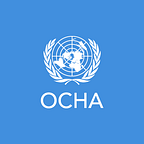Aid worker deaths: the numbers tell the story
By Adele Harmer, Partner at Humanitarian Outcomes
As we approach World Humanitarian Day, the latest numbers from the 2018 Aid Worker Security Report find us in a familiar place. The emphasis changes slightly year on year, but the overall picture for attacks on aid workers remains persistently, and unacceptably, high.
In 2017, 139 aid workers were killed while doing their jobs. Another 174 aid workers were kidnapped or injured in serious attacks. This fits an ongoing pattern: over the past decade, close to 300 aid workers have been affected by serious violence every year. In 2017 we saw a 30 per cent increase in fatalities from 2016, reflecting a heightened lethality in the style of attacks. National staff and organizations take the brunt of the attacks each year, but that share grew even larger.
The most dangerous conflict zones
Violence doesn’t happen everywhere; it occurs in only a small number of conflict countries. But these countries are where local populations, sometimes besieged by warring parties, desperately need emergency assistance. South Sudan, Syria and Afghanistan remained the most lethal places to be an aid worker in 2017, but a new and worrying rise in incidents occurred in Central Africa Republic, a country that now requires vastly more political attention — and aid resources — than it has received to-date. Nigeria also climbed into the top five countries in 2017 for the first time.
The tactics
The tactics used by warring parties reflect the broader conflict dynamics in each setting. In South Sudan, a record number of aid workers were killed by gunfire, whereas in Syria aerial bombardment remains the most common means of violence. There are other tactics that are likely under-reported, particularly rape and sexual assault. Driven by the #AidToo movement, there is some indication that reporting and coding are improving, an issue that the Aid Worker Security Database will pursue to continue to improve the evidence base.
Every attack on an aid worker is devastating for the families, colleagues and organizations affected. And the psychological toll on aid workers — perhaps the least understood part of the picture — can devastate individuals for years.
Afghanistan
Every year we look to examples of good practice to understand how this pattern of violence might change. Afghanistan offers a glimmer of hope. Insecurity in that country remains high and the Islamic State’s arrival has added complexity to the conflict dynamics, but there has been a substantial decline in the number of aid worker attacks over the past five years, since its peak in 2013. This is possibly due to aid workers minimizing their presence — spending less time in the neediest places — but it could also partly be attributed to the significant and ongoing efforts in reaching out to directly negotiate with parties to the conflict at regional and local levels. These efforts may have had a slow and steady impact on reducing the Taliban’s signature tactic of kidnapping aid workers. Negotiating with parties to the conflict is not a failsafe, as the most recent statement from the Taliban suggests, but the available evidence confirms that investing in organizational and operational capacities to undertake negotiations is critical for secure access. Afghanistan has also benefited from investments in gathering and analysing data on operational presence, which gives a more strategic picture of coverage gaps. Innovative methods to address those gaps, including the use of local transport companies, third-party and peer-to-peer monitoring and other local mechanisms, have boosted access in some areas.
Risk-sharing
However, an emphasis on local solutions, needs sustained investment in partnerships between international and national responders. 2017 saw a steep rise in the number of victims from national and local non-governmental organizations (NGOs). Recent research by Humanitarian Outcomes on an InterAction-led study of risk management within national-international NGO partnerships is finding a far greater emphasis placed on fiduciary risk — driven by donors and some corners of the aid-sceptical public and tabloid media — and less emphasis on the security risk that threatens the lives of national aid workers. In cooperation with NGOs, the study is exploring mechanisms that create more transparent risk awareness and responsiveness, as well as a recognition of the need for co-ownership of risk and the ethical duty of care to local partners.
Recourse to justice
But investing in the skills to manage and to partner in these settings is not enough. It also requires that aid agencies can pursue their legal right to protection and recourse to justice when attacks occur. To date, this has rarely been done in a systematic way, and where it has been pursued, it is rarely on behalf of a local NGO partner. The Working Group on the Protection of Humanitarian Action recently produced a Toolkit for Responding to Attacks against Humanitarian Action on the Policy Level which offers guidance on response options in three critical areas: sharing information; speaking out in safety; and challenging impunity. Consistent application of these steps — and having the resources to do so — is urgently required so that these issues continue to be placed squarely in front of those who perpetrate violence or stand silent when it occurs.
